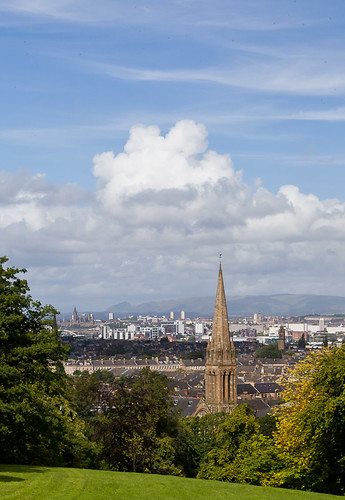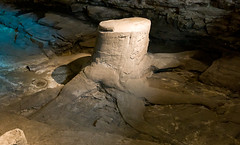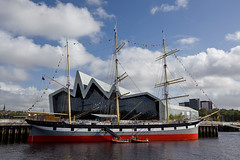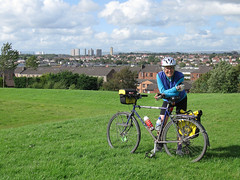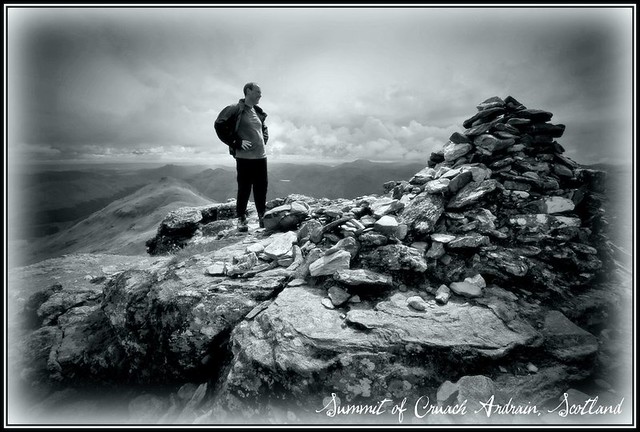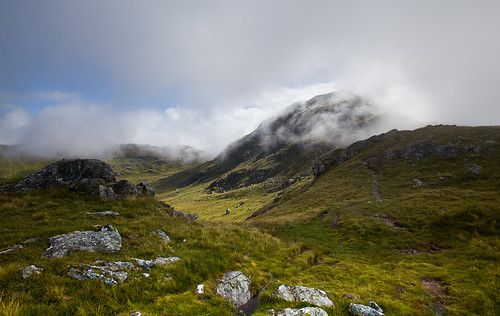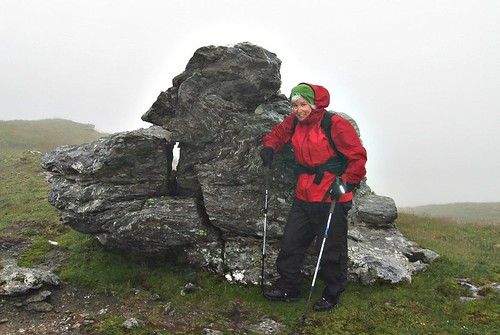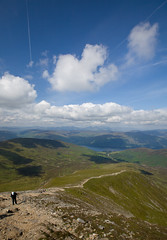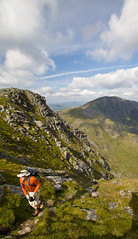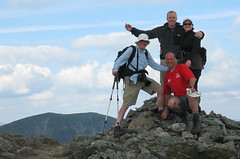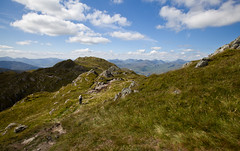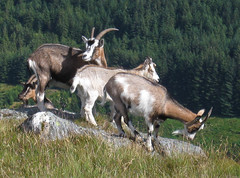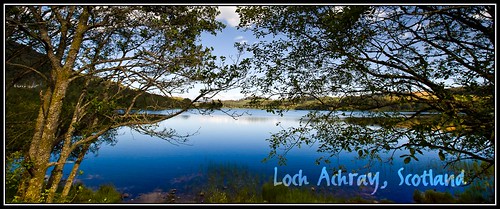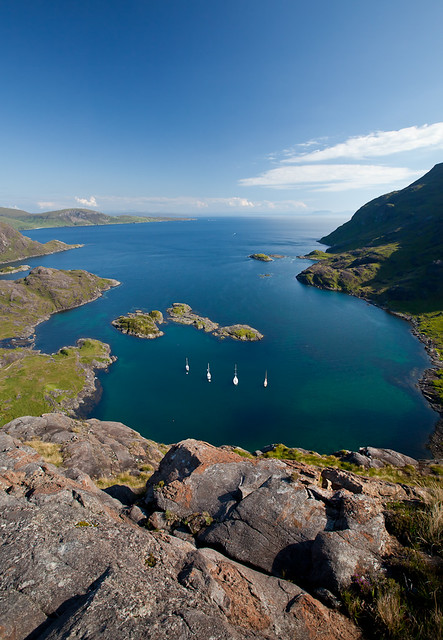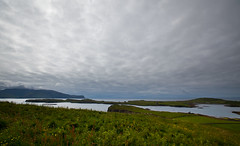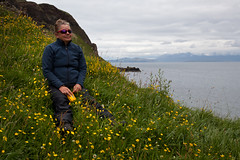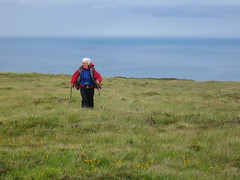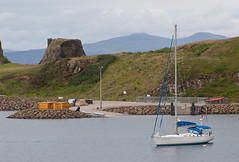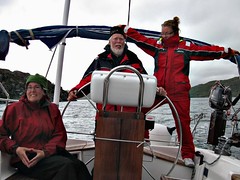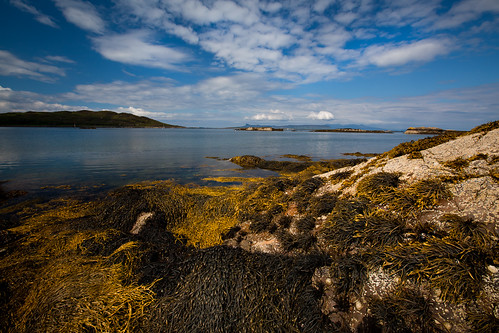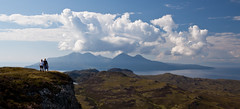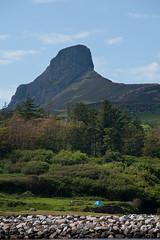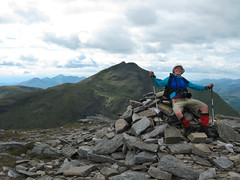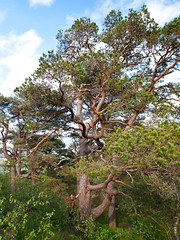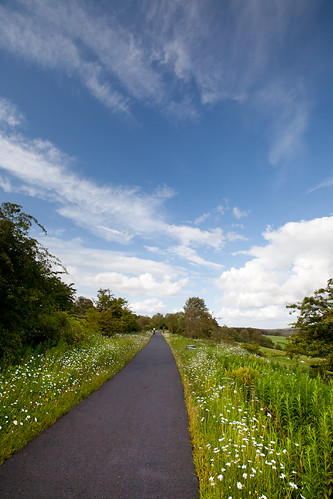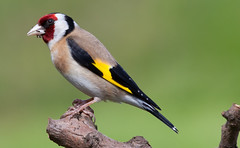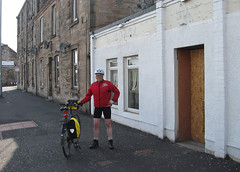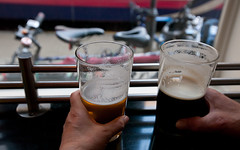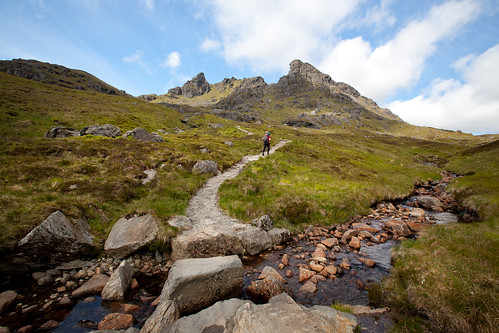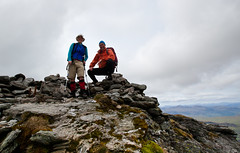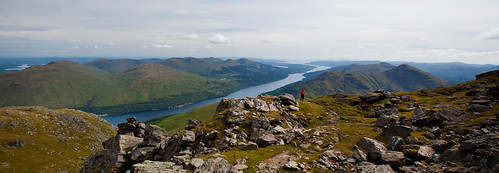 |
| Cruachan group on the left (2007) Ben Cruachan and Stob Diamh with their heads in the clouds |
If the 2011 weather had been better I'm sure we wouldn't have left Cruachan until the end of August -- not after getting such tantalizing views of its airy ridges and granite slabs from our early adventures on the likes of Ben Lui and Ben More. I was always waiting for the "perfect" Cruachan day -- the day when visibility would be so good we'd be able to see all the way from the island of Jura in the south to Ben Nevis and beyond in the north. Sadly, that day didn't come for us on this trip. We seemed to spend those "perfect" days on other mountains, with Cruachan always some place on the western horizon.
Aug 31, when we finally said "now or never", was a cloud-spattered day. I never got the much-hoped-for long vistas, and the shifting mists that boiled up over some of the northern ridges made for a few moments of challenging navigation. But, peek-a-boo glimpses of green and gold slopes and towering red granite walls were more than sufficient to focus our attention and keep us well entertained.
We started our tour right at loch-side and ascended up bracken and heather-covered slopes to the foot of a huge reservoir that covers the bottom of Coire Cruachan. We opted to head east around the reservoir, making for the bealach at Lairig Torran (Pass of Mounds). On our way up the grassy slopes above the water we were treated to the sights and sounds of a shepherd and his working dogs bringing sheep down from the heights. Calls of "come-bye", "away to me", and "that'll do" echoed through the hills, causing the dogs to wheel left and right around their charges. Eventually Mike and I had six Border Collies gambolling around our feet - obviously filled with delight at being out in the mountains, bossing sheep around.
After parting ways with the shepherd and his dogs our next delight was watching a herd of 10 red deer bound across the slopes below us. The scent and sound of the collies disturbed them and they must have thought it best to make tracks across the landscape to some place not so "doggy" . We continued up to Stob Garbh (Stob Garav - Rough Nose Peak), and then on to Stob Diamh. At this point the mist boiled in and we were locked in a silver fog with limited visibility. I was very nervous to continue, especially as I knew the steep, bouldery slopes of Drochaid Ghlas (Droch-itch Glass - Grey Bridge) with its narrow ridge trail around the sheer walls of Coire Caorach (Corra Coe-rach - Corrie of the Rowan Berries) would be next. But, the mist ebbed and we were drawn on, especially entranced by the deep red granite slabs overhanging Caorach.
There were some interesting sections on the route to work our way through. A large slab of granite on the eastern side of the Cruachan final summit ridge proved to be a bit slippery for us, so we had to manoeuvre below the outcrop -- some steep down-climbing, but quite do-able. And then we had to re-ascend the ridge. I hate giving up the high ground so there was a steady stream of rumbling from me for the entire detour! Especially annoying because on a dry day the slab would certainly have been grippy enough to hold us securely on a crossing.
The clouds surged up again as we made our way up the final pitch to the summit of Cruachan. I thought we might have to make do with no vistas at all, but, as we perched on the narrow top, the fog swirled out of sight and gave us keyhole views down into the reservoir and to Loch Awe in the distance. Unfortunately, the outlook north into Loch Etive and beyond was completely obscured -- we only had teasing glimpses of Etive from the summit of Drochaid Ghlas.
Our day on Cruachan ended with a steeply rolling descent to the bealach just below Meall Cuanail (Myowl Coo-anil, Hill of the Flocks). From here it was down directly to the west side of the reservoir. No more collies, deer, or other surprises of nature for us, but we did see two rather ill-prepared hill walkers decide to turn back. And we were happy they did -- Scottish mountains may be small in stature in comparison to our BC giants, but they are due every bit as much respect by those who venture out into them. Certainly, on this wind-pulled misty day Mike and I were more than pleased to be able to pay our respects, and finally put my "naked" ambition of standing on Ben Cruachan's summit to rest.
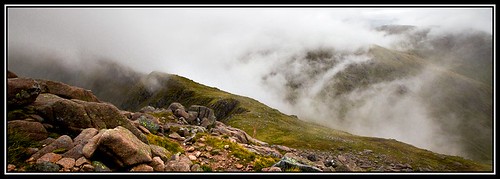 | |
| Weather moving in |
View Ben Cruachan - Aug 31, 2011 in a larger map
More pictures from Ben Cruachan.


